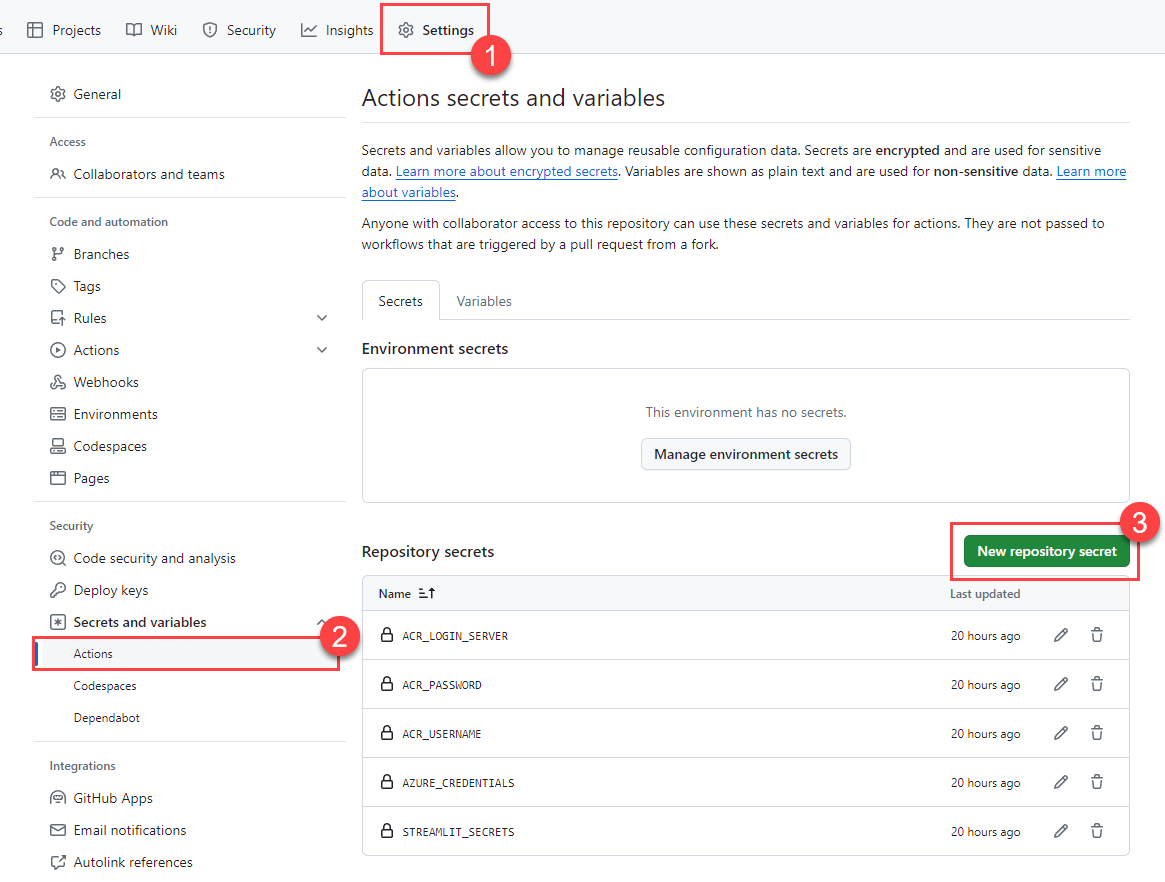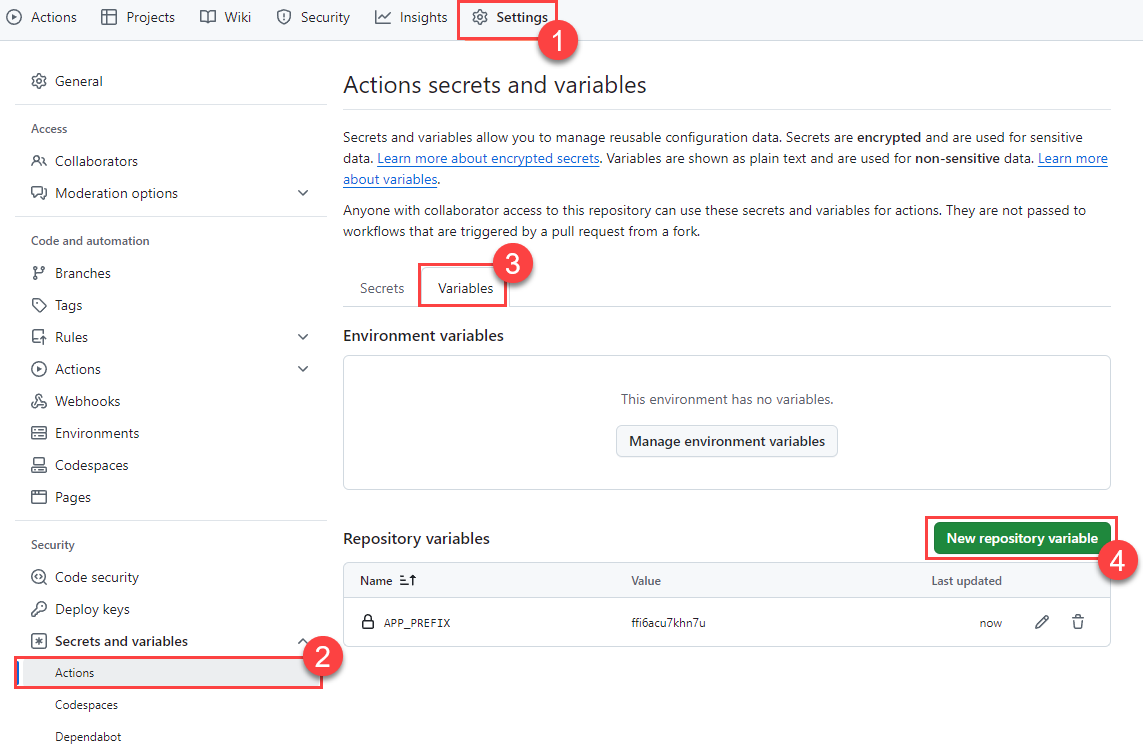Task 03 - Deploy to Azure App Services (20 minutes)
Introduction
Running the API and dashboard locally are a good proof of concept, but the Contoso Suites team makes heavy use of Azure Application Services and would like to ensure that what you build locally will integrate well into their workflow. The Contoso Suites team uses GitHub for source control and GitHub Actions workflows for code deployment, and would like to ensure that this solution will not be overly disruptive of their current CI/CD process.
Description
In this task, you will deploy the Contoso Suites API and dashboard to Azure Application Services. The Contoso Suites development team has provided you with Dockerfiles to containerize each application, as well as GitHub Actions workflows you will be able to use in your own repository.
Success Criteria
- You have deployed your API and dashboard as Azure Application Services and are able to access the dashboard remotely.
Learning Resources
- Introduction to GitHub Actions
- .NET Core Action to build and test
- GitHub Actions for Azure
- Environment variables
- Introduction to GitHub Actions
- Authenticate with an Azure container registry
- GitHub Actions for Azure
- Deploy a custom container to App Service using GitHub Actions
Key Tasks
01: Manage GitHub Actions workflows
Navigate to the .github/workflows/ folder and remove the jekyll-gh-pages.yml workflow. Then, rename api.yml.txt to api.yml and dashboard.yml.txt to dashboard.yml.
02: Track Azure resource keys and settings
In the Azure portal, navigate to the resource group you have created and select the Container registry in the resource group. Navigate to the Access keys in the Settings menu and make note of your Login server, Username, and password. You will need these for GitHub Actions secrets. Also make note of the Registry name in order to modify the GitHub Actions workflows.
03: Create a service principal
Create a new service principal named TechExcelAzurePaaS using the following command in the az CLI, being sure to replace {SUB_ID} and {RG} with your subscription ID and resource group, respectively:
az ad sp create-for-rbac --name "TechExcelAzurePaaS" --json-auth --role contributor --scopes /subscriptions/{SUB_ID}/resourceGroups/{RG}
Retain the JSON output to use in a GitHub Actions secret.
04: Create GitHub Actions secrets
Create the following GitHub Actions secrets:
STREAMLIT_SECRETS– Paste in the entirety of yoursecrets.tomlfile. Be sure to change the value of[api][endpoint]from localhost to the URL of your API’s App Service.ACR_LOGIN_SERVER– Retrieve from your container registry’s Access keys menu.ACR_USERNAME– Retrieve from your container registry’s Access keys menu.ACR_PASSWORD– Retrieve from your container registry’s Access keys menu.AZURE_CREDENTIALS– Paste in the entirety of the JSON output from runningaz ad sp create-for-rbac.
Additionally, create the following GitHub Actions variable:
APP_PREFIX– Paste in the unique identifier you used for your Azure resources.
Expand this section to view the solution
-
To create a GitHub Actions secret, navigate to your forked GitHub repository and select the Settings menu. From there, navigate to Secrets and variables and select the Actions menu. You can then create new repository secrets.

You will need to create a total of five such secrets:
STREAMLIT_SECRETS– Paste in the entirety of yoursecrets.tomlfile.ACR_LOGIN_SERVER– Retrieve from your container registry’s Access keys menu.ACR_USERNAME– Retrieve from your container registry’s Access keys menu.ACR_PASSWORD– Retrieve from your container registry’s Access keys menu.AZURE_CREDENTIALS– Paste in the entirety of the JSON output from runningaz ad sp create-for-rbac.
-
To create a GitHub Actions variable, switch from the Secrets tab to the Variables tab. You can then create new repository variables.

You will need to create one variable:
APP_PREFIX– Paste in the unique identifier associated with your Azure resources. This is a 13-character string.
05: Deploy code changes
- Commit and push your repository changes.
-
Manually execute the GitHub Actions workflows named API Deployment and Dashboard Deployment if they do not run automatically.
Expand this section to view the solution
After committing and pushing your changes to the forked GitHub repository, navigate to the Actions menu. You will see two workflows, API Deployment and Dashboard Deployment. Select each in turn and select the Run workflow dropdown and choose Run workflow against your main branch.

Each deployment may take several minutes to complete.
06: Test chat with data
Connect to your dashboard website and ensure that you can still perform chat with data operations. To test, you can use a question like, “Do I need to pay extra money to use an EV station when I am a guest of the hotel?”
It may take several minutes for Azure Application Services to be ready to serve your dashboard website. If it does not come up within 5 minutes or so, you could choose to Stop and then Start the App Service.
Expand this section to view the solution
To find the URL of your dashboard, navigate to your resource group in the Azure portal. Then, select the App service whose name ends with -dash. You can obtain the URL from the Default domain entry in the Essentials section.
